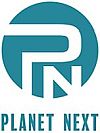Physicists mimic quantum entanglement with laser pointer to double data speeds. In a classic eureka moment, a team of physicists led by The City College of New York and including Herriot-Watt University and Corning Incorporated is showing how beams from ordinary laser pointers mimic quantum entanglement with the potential of doubling the data speed of laser communication.
Quantum entanglement is a phrase more likely to be heard on popular sci-fi television shows such as “Fringe” and “Doctor Who.” Described by Albert Einstein as “spooky action at a distance,” when two quantum things are entangled, if one is ‘touched’ the other will ‘feel it,’ even if separated by a great distance.

“At the heart of quantum entanglement is ‘nonseparability’ – two entangled things are described by an unfactorizable equation,” said City College PhD student Giovanni Milione. “Interestingly, a conventional laser beam (a laser pointer)’s shape and polarization can also be nonseparable.”
To make the laser beam’s shape and polarization nonseparable, the researchers transformed it into what Milione refers to as a vector beam – a polarization dependent shape. Then using off-the-shelf components to ‘touch’ only its polarization, they showed it could be encoded as two bits of information. Surprisingly, this was twice as much information that could be encoded as when the laser beam was separable.
“In principal, this could be used to double the data speed of laser communication,” said CCNY Distinguished Professor of Phyiscs Robert Alfano. “”While there’s no ‘spooky action at a distance,’ it’s amazing that quantum entanglement aspects can be mimicked by something that simple.”
An article on the experiment appears in the latest issue of the journal “Optics Letters” and was supported in part by the Army Research Office.
About The City College of New York
Since 1847, The City College of New York has provided low-cost, high-quality education for New Yorkers in a wide variety of disciplines. More than 16,000 students pursue undergraduate and graduate degrees in: the College of Liberal Arts and Sciences; the Bernard and Anne Spitzer School of Architecture; the School of Education; the Grove School of Engineering; the Sophie Davis School of Biomedical Education, and the Colin Powell School for Civic and Global Leadership. U.S. News, Princeton Review and Forbes all rank City College among the best colleges and universities in the United States.
Do you know that NASA have highest internet speed of 91 Gbps.It is the High Speed Internet.
It is 13000 times faster than the average Broadband connectivity of United States and 100 times faster even than the latest Google Fiber.
Japan stand at 3rd position with 15 Mbps , HongKong at 2nd with average speed of 16.3 Mbps and South Korea with Samsung electronics foundation have aced with 25.3 Mbps according to Akamai Technologies
Similarly the slowest internet connectivity country is Libya 0.3Mbps and second last Nepal with 0.48 Mbps. India another giant country is at 3rd position because there are many places where there is very rare and even there is not internet access. Test internet speed and Speed test internet are used to find out what is your broadband internet speed connection. What is the fastest internet speed of the world? Currently NASA have and its not for public but for their offices use only because they have so many data from outerspace and satellites that send bulk information at a time and data rate is super high. Internet Providers and Internet service providers now a days are so many and are providing broadband internet connection and wireless connection internet.
Home Internet like DSL,Wireless connection internet,broadband internet etc are the faster and fastest internet service that we can get from the top cheap and best internet service provider company in our area. The fastest average download data rate was measured at 23 Mbit/s in South Korea, which is over 40% faster than the next ranked country, Japan, with 12.9 Mbit/s. South Korea's speed is almost six times faster than the world average of 3.8 Mbit/s, and more than twice as fast as the United States at 10 Mbit/s. 100 Mbit/s service is the average standard in urban South Korean homes and the country has rolled out 1 Gbit/s (1,000 Mbit/s) connections nationwide, which cost $20 per month,[2][3] approximately 263 times faster than the world average and 100 times faster than the average speed in the United States.
South Korea is the world leader in Internet connectivity, having the world's fastest average internet connection speed.
South Korea leads in the number of DSL connections per head worldwide. ADSL is standard, but VDSL has started growing quickly. ADSL commonly offers speeds of 2 Mbit/s to 8 Mbit/s, with VDSL accordingly faster. The large proportion of South Korea's population living in apartment blocks helps the spread of DSL, as does a high penetration of consumer electronics in general. Many apartment buildings in built-up metropolitan areas, such as Seoul and Incheon, have speeds of up to 100 Mbit/s.
Where’s the best place to surf the web? No surprise, it’s not North America! South Korea continues to lead with the fastest internet connection speeds, according to Akamai’s eleventh quarterly State of the Internet report. The U.S. ranks 12th.
The first reason is a comparatively lower investment in broadband infrastructure in the US, as compared to many Asian nations such as South Korea and Japan, whose cities tend to dominate the list. In addition, Wall Street frequently punishes carriers in the short-term for making long-term investments in network infrastructure.
Source
